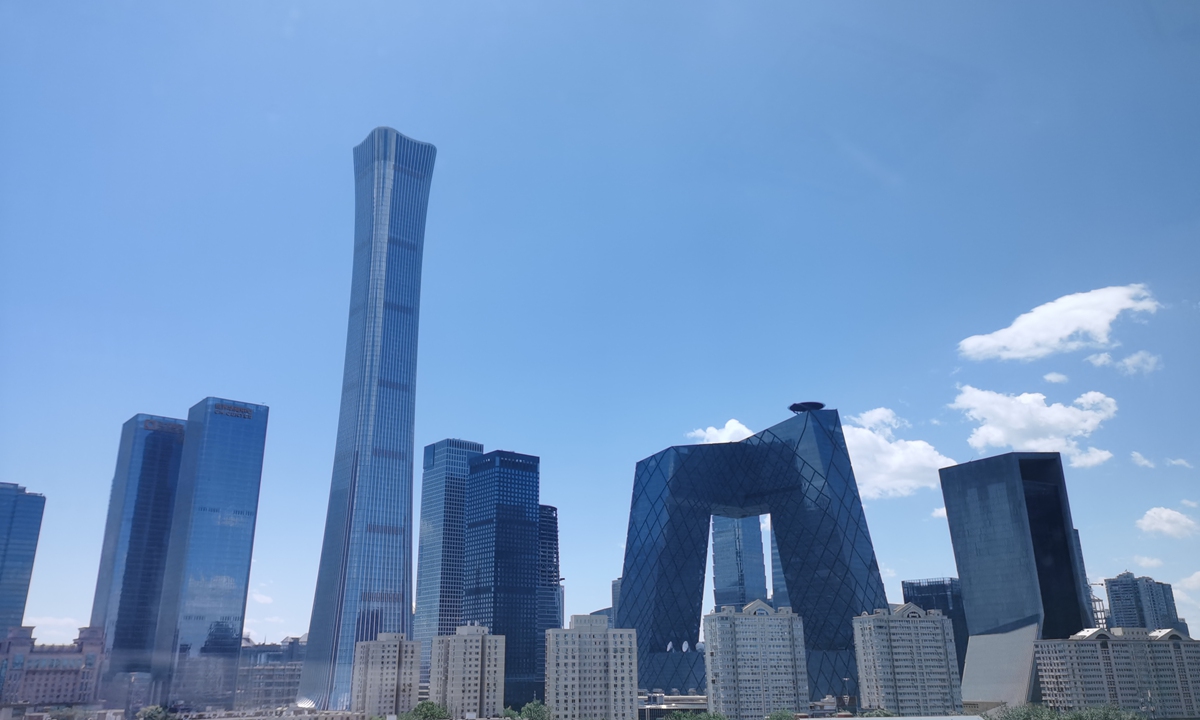China saw air quality improve in 2019 while rising ozone pollution causes concerns: annual report
By Shan Jie Source:Global Times Published: 2020/6/2 22:02:10

Buildings in Beijing CBD are seen under blue sky on Sunday. Photo: Li Lei/GT
China has seen its major cities' air quality improve in 2019 with the country's efforts to beat the air pollution in the past years, according to an annual report on the country's environment condition on Tuesday. In response to the concerns over ozone density increase, senior officials in the environment authority noted the harm of ozone to humans can be prevented and controlled.
Among China's 337 cities, 157 have met the air quality standard in the past year, accounting for 46.6 percent. The cities on average enjoy 82 percent of days with good air quality, which indicates their air quality index (AQI) was lower than 100, according to the China Environment Report 2019 published by the Ministry of Ecology and Environment on Tuesday.
In 2019, cities with best air quality were Lhasa in Southwest Tibet Autonomous Region, Haikou in South China's Hainan Province and Zhoushan of East China's Zhejiang Province. Anyang of Central China's Henan, Xingtai and Shijiazhuang in North China's Hebei Province had worst air quality in the country.
Among the main pollutants, PM2.5 density was 36 microgram per cubic meter. Densities of PM10 and SO2 have also declined, according to the report.
However, the density of ozone rose in 2019.
Across the country, days of ozone pollution accounts for 41.8 percent of all pollutions in the year, becoming a key problem in summer's air quality, Bai Qiuyong, chief at the Department of Ecological and Environmental Monitoring of Chinese Ministry of Ecology and Environment (MEE) said at a press conference on Tuesday, in response to that ozone pollution problem has been more obvious as the density increased year by year.
"Ozone exceeds the standard usually when the temperature is high and sunshine is stronger. As long as people stay indoors, the harm of ozone to them could be prevented and controlled," Qiu said.
Qiu introduced that, in China, the causes of the ozone pollution are the high densities of VOCs and NOx. And adverse weather conditions such as strong sunlight, fewer clouds, and wind and rainfall could accelerate the chemical reaction. In the 337 cities, the average ozone density is 148 microgram per cubic meter.
At a press conference of May, the ministry announced that China will conduct a campaign to tackle ozone pollution this summer. In early May, ozone pollution quotas were exceeded in almost 200 cities in China, including Beijing and nearby cities.
According to China's three-year action plan to fight air pollution, cities with low air quality standards should see their PM 2.5 density, a key indicator of air pollution, fall at least 18 percent from 2015 levels by 2020, while cities at prefecture level and above should see the number of good air days reach over 80 percent annually.
Posted in: SOCIETY,ENVIRONMENT